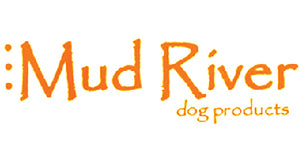Did you know dogs who frequent the river for sport or leisure are at an increased risk of acquiring fungal disease?
Two fungal agents, Histoplasmosis (Histo) and Blastomycosis (Blasto), are rarely seen in pets who remain exclusively in urban environments. These two fungi may be implicated in diseases seen in dogs that visit the moist nitrogen rich soil of central North America's river valleys.
Fungus is challenging to eliminate from the environment. Both Blasto and Histo spores survive well in moist, cool, soil that is rich in their primary nutrient sources: decaying organic material and feces. Fungus plays an essential ecological role in the recycling of organic material, but when it inadvertently enters into a mammalian host, disease is often the result. Dogs are much more likely than cats or humans to acquire Blasto or Histo infections; whether this is due to increased susceptibility or simply increased exposure is unknown. Fungi gain access to the body primarily through inhalation of infectious fungal spores. Fungi set up shop in the respiratory tract after spores are inhaled. Several weeks to months may pass before a dog’s owner notices signs of illness. Early symptoms may include lethargy, increased breathing rate at rest, coughing or sneezing, fever, or weight loss.
Symptoms may wax and wane. If disease is not detected early, the fungus often spreads to other locations of the body. Fungal disease may infect the eye, brain, spinal cord, skin, bones, heart, intestine, liver, spleen, reproductive organs and kidneys; any organ can be a potential target of disease. Fungal disease appears less common than bacterial or viral disease in pets which makes the condition tricky to diagnose - like a wolf in sheep's clothing. Symptoms are vague or nonspecific.
Often a diagnosis of fungal disease is reached after other more common diseases have been ruled out. Failure to respond completely to viral or bacterial treatment is an indicator that a different disease agent may be contributing to symptoms. Blood and urine tests, radiographs, and microscopic examination of tissue samples can be beneficial in diagnosis. In most cases additional testing with fungal specific diagnostics will be needed to confirm a suspected infection. Antifungal medications, anti-inflammatories, and occasionally surgery are needed, and treatment often lasts months and is expensive. Medication side effects can be dangerous. Some dogs become more symptomatic in the first few weeks of treatment due to fungal die off in the body - this occasionally results in death.
Cases in which dogs acquire brain or spinal infection are often fatal despite treatment. Many pet owners have wondered how to protect their dogs from these two fungal diseases. Unfortunately, anything other than strict avoidance of river bed environments is of little value. I would never expect to keep a happy dog away from the water, but warn only of the potential risks and also to promote pet insurance if you have not already considered this for your pets. Riverbed soil is most risky for potential fungal inhalation on windy days following recent flooding of river banks. Travel history will be highly beneficial information to your veterinarian in reaching the correct diagnosis and treatment plan should your pet become ill.
### Amanda Burow, D.V.M. (Dr. B), is a graduate of Iowa State University’s College of Veterinary Medicine. Dr. Burow’s patient list includes hunting dogs of all varieties, as well as several field trial dogs and full time sporting guide dogs. In addition to practicing general veterinary medicine, she has special interest in the areas of preventive care, emergency medicine, and dermatology. In her spare time, she enjoys being outdoors and on the lake, staying active, reading, and spending time with family and friends. Mud River is proud to share these tips from Dr. B with our customers. Keep in mind it is best to work with your local veterinarian to determine the needs for your animals.







